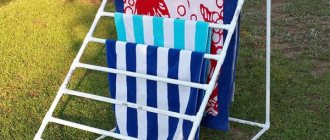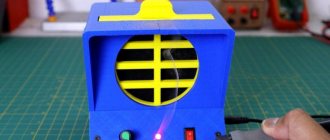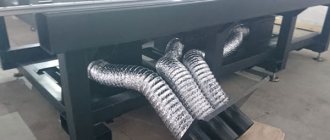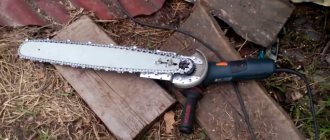Homemade CISS Longprint for HP printers with DJ5 (“barrel”) cartridges
There is a class of HP office printers with separated cartridges and print heads (a number of Designjet, Officejet and others models). The operating principle of their printing system is similar to CISS: foam-free cartridges (type DJ5 , also called “barrel”: No. 10, 11, 88, 82, 940, etc.) are installed in stationary slots, and ink is supplied to the corresponding PGs via loops .
DJ5 type cartridge diagram (HP 940, 10, 11, 88, 72, 70, 727)
DJ5 cartridge is noteworthy : an opaque plastic bag with ink is inserted into the plastic cartridge. The bag contains an outlet fitting (through which the paint enters the loop), an ink pump and a factory refill hole. From the manufacturer's point of view, such ink tanks cannot be refilled. Although, technically, such a possibility exists.
From left to right: removed gasket, technical hole, pump, fitting.
Disadvantages of CISS for HP printers
Since manual refilling of foam-free cartridges is quite complicated and takes a lot of time, most users trying to save money install a SPD or a conventional continuous ink supply system on their printers (such a CISS uses a combination of SCP-cables-containers), and the chips can be either non-original or removed from the originals.
Most third-party CISS have a drawback compared to original cartridges - the lack of a proprietary pump for HP cartridges. Pumping ink through a pump protects the print heads from airing and possible damage, blocking the operation of the CISS/PDC when the ink runs out. Without a pump, the printer will continue to print if you miss a refill and air may end up getting into the head. After this, you will either have to buy a new PG, or try to revive it with something like this set.
In order to reduce the likelihood of such problems, enthusiasts developed a schematic diagram of the CISS Longprint (“longprint”, in fact, a CISS constructor based on the DJ5 ).
Differences between Longprint and standard CISS
Longprint is cheaper than a ready-made standard CISS fully equipped, because it does not require replacing original cartridges, and any bottles can be used as donor containers, since pressure balancing is not required (this is done by the printer’s printing system). The Longprint design ensures an uninterrupted supply of ink into the designated plastic bag inside the plastic ink cartridge. To do this, use the factory filling hole, which is blocked with a rubber gasket (which, we remind you, according to the manufacturer’s intention, should not be used in any way).
The principle of operation is as follows: an air filter and a pass-through fitting connector are inserted in parallel into a separate container with paint (future donor, any bottle). A capillary tube is connected to the fitting. A hole is made in the plastic cartridge cartridge to match the size of the capillary. The tube is threaded through the resulting hole in the housing, after which it is tightly connected to the filling hole through a plastic adapter (purchased or made independently from improvised means).
HP printer with installed CISS LongPrint
Is Longprint worth installing?
The Longprint constructor allows you to organize a continuous ink supply system for printing at a reasonable price, while maintaining the original print head protection scheme. On the other hand, such a pure “homemade” scheme is based on non-standardized components of different sizes, the incorrect installation of which can seriously damage the printer and components. The installation of Longprint should be entrusted to specialists, having first weighed the pros and cons. Installing a conventional CISS with your own hands is much simpler, safer and not much more expensive, and with proper maintenance it does not create unnecessary problems.
Method #1: Acid Ink (Lemon Juice)
In theory, the most tried and true method for making homemade invisible ink is to simply apply pure lemon juice (or, as mentioned, a number of other acids) to a piece of paper. Once the paper is completely dry, you apply heat and voila! – the “ink” became visible. The acid is well absorbed into the fibrous material of the paper, leaving its invisible traces on it, since it changes the structure of the paper fibers; when you apply heat, the areas that were treated with acid turn brown.
This is by far the most common method you'll see when you search online for ways to make invisible ink. However, not all so simple. As a blogger who decided to make invisible ink for his 4-year-old son describes the experiment, using citric acid as ink did not allow him to achieve the “spy effect.” So, according to him, when using lemon juice and a small brush to apply inscriptions to paper, the inscriptions did not appear when heated. Moreover, as he writes, he tried various heating methods, but was unable to reveal the inscriptions made with lemon juice. A hairdryer, an incandescent lamp, and even a gas stove were used for heating, over which the blogger held a sheet of paper.
The worst part is that with gentle heat the ink didn't really show up. However, with strong heating, the hidden inscription began to appear. But that was when the paper practically began to burn. Overall, this experiment showed that when using citric acid as a latent ink, in order to develop it, the paper would need to be heated very carefully for a long time.
Many people write on the Internet that this method works if you hold paper with hidden ink over a hot light bulb for 20 minutes. According to the blogger, this method is more suitable for adults, but not for children, since it involves a heating source, which is unsafe for children.
So father and son were disappointed with their first experiment.
Then they started searching the Internet again for a way to make invisible ink. As a result, they found an interesting method, which, as it turned out, works 100%. see also
40 Unusual Ways to Use WD-40
Considering the acceptability of CISS
Some users, trying to reduce their costs, switch from branded cartridges, that is, those produced for a specific brand of printer, to universal options. This often results in poor quality printouts and can sometimes damage the printer. The good news is that there are ways to save money on cartridges without compromising your printer or image quality. To do this, just buy a CISS for a printer from HP or any other manufacturer of printing equipment and install it.
Rice. 1. Printer with CISS
CISS (continuous ink supply system) is a system for supplying ink to an inkjet printer from separate large containers of dyes. The system is based on the presence of large external refillable ink tanks. This attracts many users who do not want to buy a cartridge just because the previous one has run out. Instead, they prefer to buy CISS for HP devices (in Novosibirsk or any other city in Russia). The main motivation is that ink is relatively inexpensive, which can significantly reduce printing costs.
The marketing policies of many printing equipment manufacturers are focused on income from the sale of cartridges. This is why printer and cartridge manufacturers overwhelmingly criticize the use of CISS. The only exception is Epson, which produces printers equipped with CISS. Therefore, for some Epson printer models, installation of CISS is not required. On the other hand, Canon printers will require installation of CISS.
The main starting point is the volume of your printouts. If you change cartridges no more than once every 2-3 months, then it doesn’t make much sense to switch to CISS. Moreover, if you rarely print, then stagnation of ink in the CISS can lead to deterioration in the quality of printouts. On the other hand, if you change cartridges more often than once a month, then using CISS can quickly pay for itself.
Introduction
I'm sure every person who uses an inkjet printer, when it runs out of ink, thinks to himself: “Well!
Again! Now change the cartridge again! Cleaning the nozzles again!.. Tired of it already!..” Nowadays, the NPC system, or in its full version, a continuous ink supply system, when ink is supplied to the print heads not from cartridges, but from fairly capacious jars, has become widespread.
What's good about this system? There are several answers. Let's list:
- You will never have to change cartridges again!!!
- The volume of ink bottles is much larger than the volume of cartridges, so the system lasts for a very long period of time without refilling.
- To refill, you just need to unscrew the cap with the straw from the empty jar and replace it with a new, full one.
- One branded cartridge costs almost an order of magnitude higher than a much larger jar of the same ink.
- But the most interesting plus is that such a system can be assembled at home, and this work will take at most a couple of hours, of course, if you have the necessary tools, a head on your shoulders, a brain in your head, a pair of straight hands, and most importantly , wish!
Actually, in this article I will tell you a story about how to assemble a CISS yourself.
Other types of CISS
So far, we have considered a system that is used with a print head made in a separate design. There are CISS that are also installed on combined print heads.
This is when it contains both an ink reservoir and a print head, as, for example, in many HP models.
It will, of course, work somehow, but air will gradually accumulate in the cartridges, and removing it from there will be a real pain. The fact is that most cartridges contain a foam type filler that can hold a certain amount - and nothing more.
And, if they are filled to the top with ink, it can flow through the nozzles. Thus, you need to somehow close the nozzles and tinker with the seal (in the place where the ink plume is supplied). This seal may often not be of the best quality. Then you need to open the nozzles before installing the cartridge into the printer (and ink may drip from there again). The work is still the same...
The print head in a combined cartridge has a significantly shorter resource
than a head made in a single design.
And when changing cartridges due to a failed head, you need to repeat all these tedious manipulations again.
It is better to refill combined cartridges, and not to put CISS in them!
Not long ago, capsule systems with damper chambers appeared. Interesting technical solution! Essentially, there are two capsules, one of which is a damping element.
The CISS delivery set includes cable holders, which are secured in the right place using self-adhesive gaskets. To be honest, they usually don’t hold very securely. It’s good when they are attached to the outer surface of the printer. But when on the inside...
Glass cleaning solution
Cleaning liquid for Canon or Epson inkjet printers can be made using a common glass and mirror surface cleaner:
- You will need to find two components - distilled water and a cleaning agent. The latter can be the popular “Mr. Muscle”, “Mr. Proper” and so on.
- It is necessary to familiarize yourself with the composition of the product: it must contain isopropylene alcohol and sodium sulfethoxylate. It is these components that soften the dried ink on the print head.
- Do-it-yourself washing liquid for inkjet printers is prepared in a separate container in the following proportion: 9 parts distilled water to one part detergent. To strictly observe the dosage, you can use a syringe with markings.
- Try cleaning the printer components with this solution. If the result is unsatisfactory, you can add another glass cleaner. But in any case, its share should not exceed 50%!
So, first of all, what we need:
Of what should be
From what you need to buy
Personally, I bought tubes at the market in a radio parts stall... I took them with a reserve - five tubes, each one and a half meters long. It cost me 50 rubles.
I was lucky with the paint, because right next to my house in the supermarket there was a department selling ink for printers. This is the most expensive part of the idea, because four jars (for four colors) cost me 1,150 rubles. But I didn’t bother too much, because one branded cartridge for my printer costs even more!
In the picture above: on the left are tubes, on the right is a color cartridge, in the center are old syringes for refilling the printer...
This is what paint cans look like.
Professional cleaning fluids
Solutions that you can purchase in the store (or make yourself) can also be used as a preservative element. The composition of washing fluid for inkjet printers is close to the composition of paint. Therefore, it does not accelerate the precipitation of pigment. But such a phenomenon is inevitable by its nature. Remember that the shelf life of the paint is only a year. If you try to dilute it, this will only speed up the process of formation of pigment sediment.
The most common professional products on the market are:
- Inktec. Flushing liquid for Epson and Canon inkjet printers. It is used when a certain color has become poorly printed or the device has not been used for a long time. The shelf life of the solution is 2 years.
- OCP tools. Packaged in 100 ml bottles. Also good for two years. Used for effective cleaning of print heads of printers and MFPs.
Self-installation of CISS
It's simple - even a child can do it. Let's take a step-by-step look at how this happens.
- Take the printer and place the refilled CISS to the left of it. Straighten out your train.
- Connect the printer to power. You will see a message to replace the cartridges.
- Open the printer, do not forget to press the OK button so that the carriage moves to the position required for installing the cartridges.
- Once the carriage is in place, unplug the printer by unplugging the cord.
- Carefully holding the cartridges on both sides, install them vertically into the carriage. Press them down lightly until they click and check the latches on all cartridges.
- Install an elongated bar on the inclined part of the panel on the device body, stepping back three centimeters from the edge.
- Fix the cable in a special connector on the plastic strip in front of the carriage.
- Move the carriage with cartridges to the very end, and then back, to make sure that the cable is not twisted and straightened, otherwise the printer will generate an error when printing. If necessary, lengthen or shorten the train.
- Take out the small plugs from the CISS and, in order not to lose them, put each one in a large plug of the corresponding color.
- Insert air filters in place of the plugs.
- Connect the printer and turn it on. If a message appears asking you to replace the cartridges, lift the cover and click OK. When the carriage moves to the replacement position, hold down the chip reset button for a few seconds. After that, click OK again.
The easiest way
The simplest flushing fluid for inkjet printers is distilled water. It is important to note that ordinary chilled boiling water is not a full replacement. In order for distilled water to cope with its task most effectively, it should be heated to 50-60 degrees before washing.
This method is good if the printer has been “resting” for no more than 2-3 months. In the case where the period is longer than this, or the device has been in a room with consistently high temperatures all this time, you need to use one of the methods described below.
Why is CISS for Epson Stylus TX117 beneficial?
Continuous ink supply system designed to:
- -reduce the cost of purchasing a printer cartridge;
- - provide the ability to visually control the ink consumption in the cartridge during the printing process;
- -replenish the cartridge with ink of the required color;
- -buy ink in different volumes from 75 to 1000 g, depending on the need.
According to consumer reviews, they managed to reduce the cost of purchasing cartridges by almost 30 times, which made it possible to reduce the cost of a printed sheet by tens of times.
Why do you need to use flushing fluid?
Let's decide in what cases this tool can be useful to us:
- Cleaning a cartridge that you need to refill. This is necessary to prevent a reaction between inks from different manufacturers. Its consequences can be very sad: a sediment forms that blocks the nozzles on the nozzle plate. Liquid excludes this option.
- Printhead clogging. Flushing fluid for inkjet printers is the second stage here. It is used when standard cleaning did not produce results. The solution is designed to help restore the functions of the print head by freeing it from dried ink.
- Cleaning other elements of the printer or MFP from splashed ink.
Is it worth buying CISS for home use?
Artem Kashkanov, 2016
Which printer should I buy for home photo printing?
Color printers are inkjet, laser, sublimation. Models for home use cost about the same, but their maintenance costs can vary significantly.
The most expensive way to print photographs is with a sublimation printer. One 10*15 cm print costs about 25 rubles (in 2016), but the print quality is very good - photographs are printed on thick paper and look like postcards. Limitation - most printers cannot print larger than 10*15 cm.
Laser printers are the most versatile and “problem-free”. They provide the best quality document printing, but in photographs the colors are too harsh and there is a “typographical” grain in the image texture. In principle, if you do not examine the photographs under a microscope, their quality is quite decent for home printing. Regarding consumables - it all depends on the printer model and the presence/absence of the ability to refill cartridges. If this is not possible (for example, the drum does not last more than 1 refill), the cost of photo printing will not be much less than that of a sublimation printer.
Inkjet printers are the cheapest and, at the same time, the slowest and most capricious devices, but they provide the best quality photo printing (especially 6-color models). This “best quality” is manifested with original consumables and on original photographic paper, which cost a lot of money. However, almost any inkjet printer can be equipped with a system of continuous ink supply or refillable cartridges - this will greatly reduce the cost of printing, but almost always entails new problems, to solve which you need to have a certain level of technical knowledge and understand “how it works” " to determine "why it's not working"











